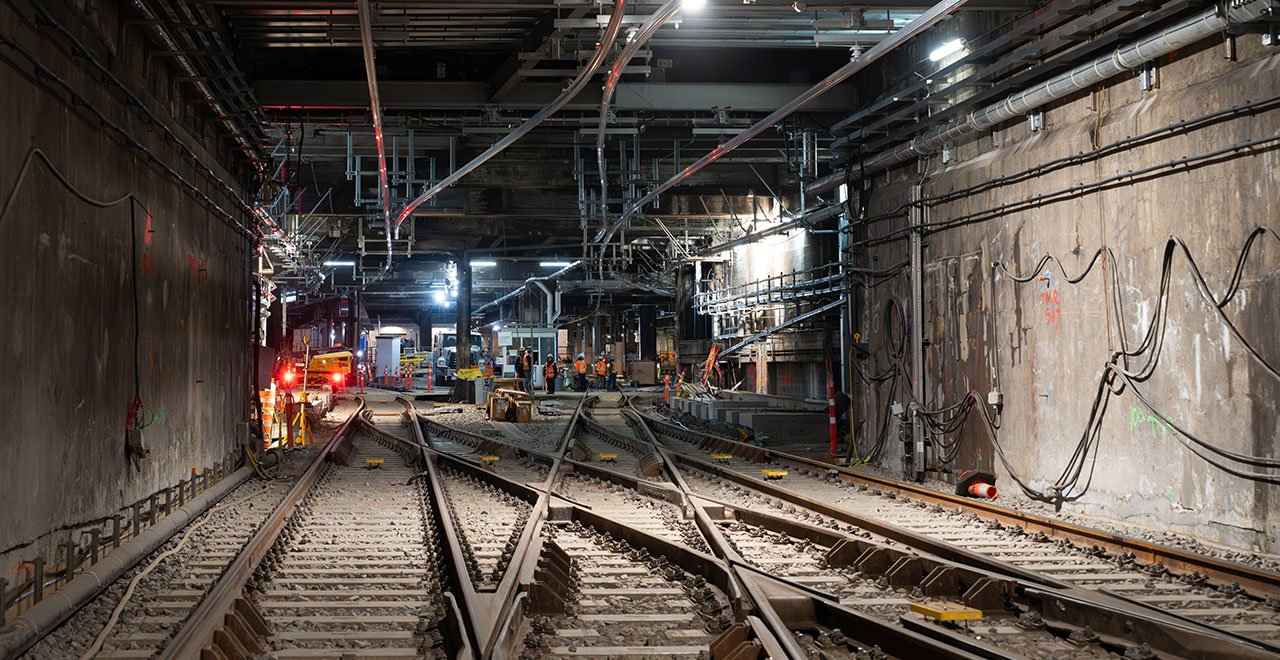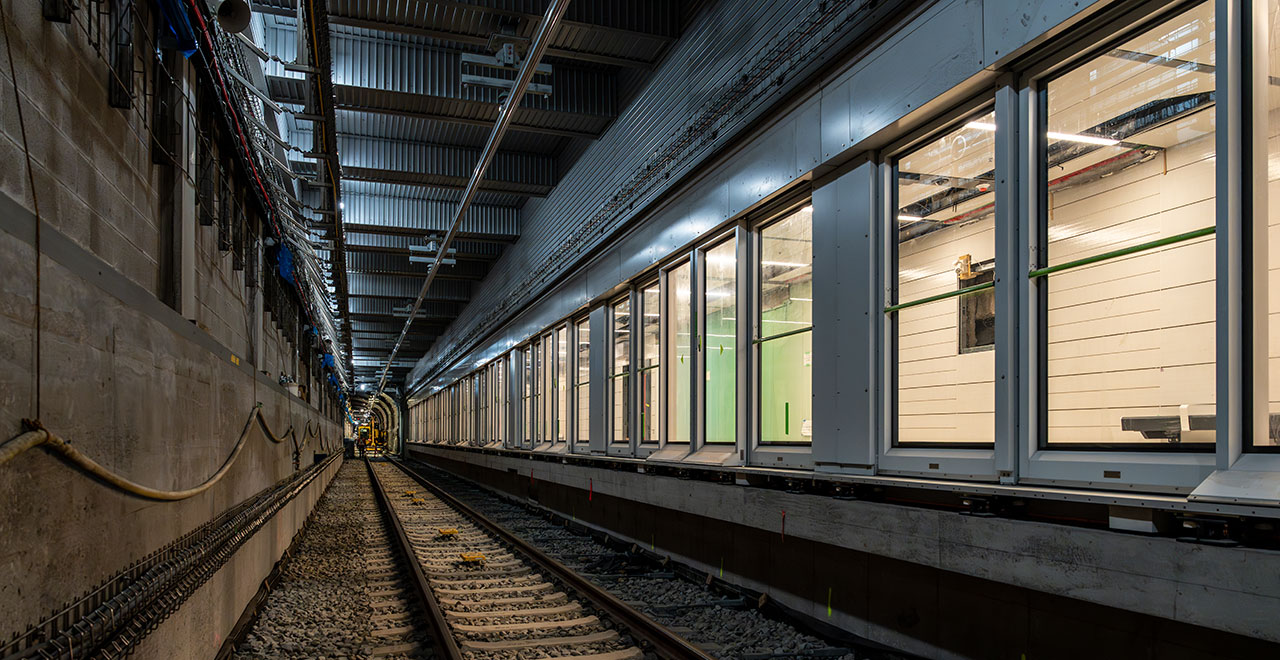
First passage of the REM through the Mount Royal Tunnel and start of dynamic testing in the area
Beginning in April 2025, REM cars will be progressively running on the REM tracks between Du Ruisseau and Gare Centrale stations, and in the Mount Royal Tunnel. With the addition of the last segment in the dynamic testing phase, the entire Deux-Montagnes and Anse-à-l'Orme branches are now in test mode.
A few weeks ago, the first REM cars passed through the tunnel; an important step that allowed the initiation of this dynamic testing on the network. Our teams will test various components of the REM in a multitude of scenarios to ensure the robustness of the network, until the commissioning.
Continuation of dynamic testing
Crews of Groupe PMM (GPMM), which is the REM operator, will be on site to test every component of the network, from the cars to the stations, including signalling, communications and the sliding doors.
The cars will run at low speed for a few days in April between the Du Ruisseau and Gare Centrale stations. Dynamic testing, and therefore car operation, will have to be paused for a few weeks to complete construction. The tests will resume in May at high speed. The objective is to replicate in-service REM conditions, with the same frequency and maximum speed of 100 km/h, depending on the area.

Learn more about dynamic testing
Find out more about dynamic testing, its duration, and the different stages to complete.
Review of the first passage through the tunnel
A major milestone was reached at the beginning of March: the REM ran through the tunnel for the first time, traveling from Du Ruisseau station to Gare Centrale station. To allow the first passage of the REM through the century-old tunnel, the tracks between Du Ruisseau and Gare Centrale stations were reserved for test teams. For two days, they carried out what is called track validation; a necessary and preliminary step to prepare the network for dynamic testing in the spring.
Track validation is when the REM runs at low speed on the rails to allow the system to detect the beacons placed along the route. By capturing the signal from the beacons, this will allow REM cars to operate automatically, indicating their exact position in real-time. Additionally, this step helps identify network elements such as station arrival, platform positions, and switches.
Mount Royal Tunnel, the backbone of the REM
The century-old tunnel, 5 km long, is the central point of the REM network, connecting downtown Montreal to Laval and Deux-Montagnes in about 30 minutes. The modernization of this infrastructure, which began three years ago, has posed significant challenges for the project teams. The work is largely completed.
In numbers:
- 5 km, the length of the Mount Royal tunnel
- 10 km of tracks for the REM
- 600 km of cables deployed
- 3 underground stations
- 1912, start of tunnel construction

On the way to the next service launch
REM teams continue their efforts towards the next service launch, scheduled for October 2025. Here are the next major steps:
- Finalize the gradual migration of operations from the temporary control center in Saint-Eustache to the permanent control center on the South Shore;
- Dynamic testing on the entire network, including the Mount Royal tunnel;
- Test runs;
- Service launch.